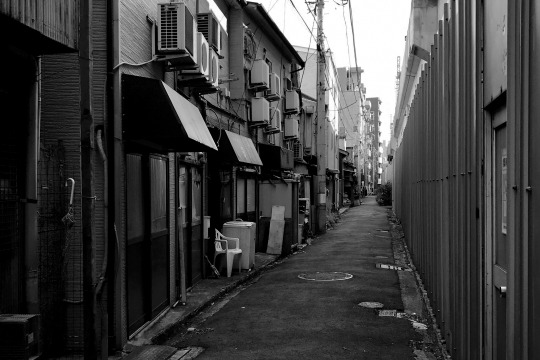Our Visual City
私たちのビジュアルな都市
Visual cues remind us where we are, and in every waking moment we read our surroundings, interpreting the environment through a lifetime, or part thereof, of knowledge and experience. We perceive place with a multitude of senses, but in this day and age often experiences of space and place lean towards the visual, whether driving in a car, looking out through a window, or viewing through a screen, other senses are limited to place unnatural weight on the visual experience. The smallest visual detail can trigger moments of recognition, but without a point from which to reorient, without knowing where we are, can we feel connection to that place?
On a recent drive from Dublin, in the Republic of Ireland, to Northern Ireland, I found myself searching for such clues of location. After the peace process and Good Friday agreement between Ireland and political parties in Northern Ireland in 1998, and despite the continuance of the 499km border division between north and south, there has been no visible border present between the Republic and the United Kingdom*1. For close to fifteen minutes I could not have told you in which country I was. While it is common within the EU to have inconspicuous border markings, the Irish border is unique in that it has no signposts to inform travellers that they have crossed a territorial boundary. Only by reading the contents of graffiti, or noticing the change in sign posting from bi-lingual place names to English only, did I reorient myself. I was not lost. I drove along, no change in course, but an inability to locate myself within my understanding of that place, made for an interesting experience of dislocation.
In the absence of official markings, each side of the open border has been tagged with graffiti, or flags have been erected or painted to claim the space, and also to mark occurrences of tragic events at those sites. Human beings have placed claim on territories through visual markers for as long as tribalism has been a part of culture. And for as long as we have structured our societies through division, belonging has been of importance. If it were not for the visual interventions into the landscape of the Irish border, it would have taken considerably longer to reorient myself. We seek these unofficial signs in every place that human beings have existed. We look for the traces of territorial markings, official and unofficial, to understand our degree of belonging to or separation from place.
When calling into question the importance of the visual in our cities, graffiti offers a multifaceted example. Graffiti is present in many disadvantaged areas but it is also used as a means to regenerate the same areas through organised or commissioned graffiti projects. The defacing, tagging or decorating―depending on your opinion on the quality of image in question or graffiti culture as a whole―of public or private property, is read as a signifier for the local area, its safety and quality of life. In discussions of gentrification, and the “cleaning up” and sanitisation of neighbourhoods with a history of social problems, poverty or illegal activity, the value of visual traces―under-maintained or defaced property, etc.― are more than the remnants of the past. They are visual clues to the history of human experiences in that place. The cleaning up of an area too often results in the sweeping away of visual cues of the history of a place, and with it much of the character of the area.
A question to be considered more deeply is “Do we really want to live in a clean city?” Indeed, a better quality of air, an absence of unpleasant odours, and certainly fewer cockroaches, are preferable to most. However, are we human beings really happy in visually sanitised spaces? Furthermore, without the visible traces of human experiences in the city, along with the interventions of the passing of time, can we feel a sense of belonging?
Run-down or abandoned storefronts present the image of a suffering economy, or aging population, but in removing such visual cues, it is important to consider whether the reform is designed to address the problems the community is facing, or whether the cleaning up is for the benefit of the middle-classes. A great number of local authorities and organisations working with disadvantaged areas throughout the developed world accept that gentrification is not the answer, and seek instead to facilitate a self-determined approach for local communities, often teamed up with art-related intervention and community-engaged projects. Although this has been a positive development, an ideal model on which to redevelop the space of the community has yet to be established, and thusly the image of the gentrified city, a clean and economically viable model, still prevails to some degree. The problem with this image of the city is the removal of human traces, of the markers and cues that denote one’s belonging. There is a kind of power in the aged, the defaced, or even the broken places of the city. They speak of the histories of people, of human acts and if the progression of society as a whole. Rather that sweeping away these visual traces in an effort to redevelop an area, we must look for ways to harness the strength of these visual cues of territory and time―this otherness of the city.

Endnote:
*1 For further reading on the Irish border see Catherine Nash and Bryonie Reid, Partitioned Lives: The Irish Borderlands, 1 edition (Burlington, VT: Routledge, 2013).
